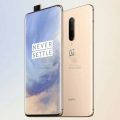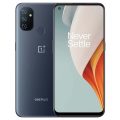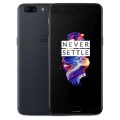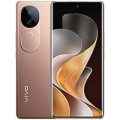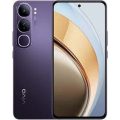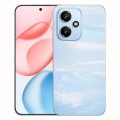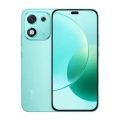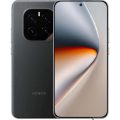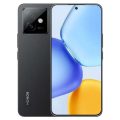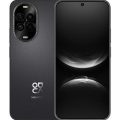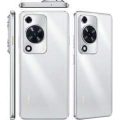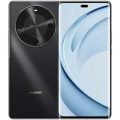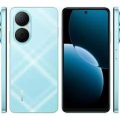OnePlus 12
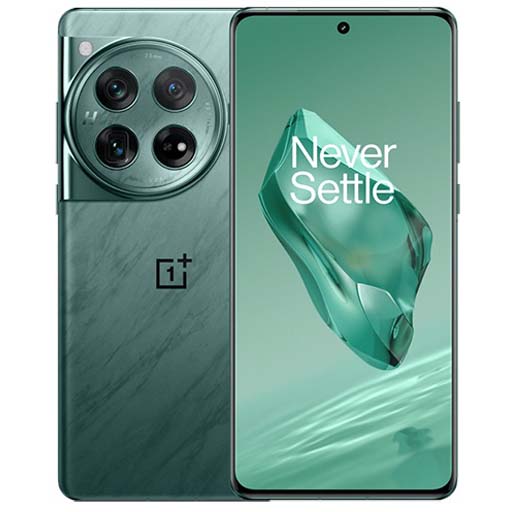

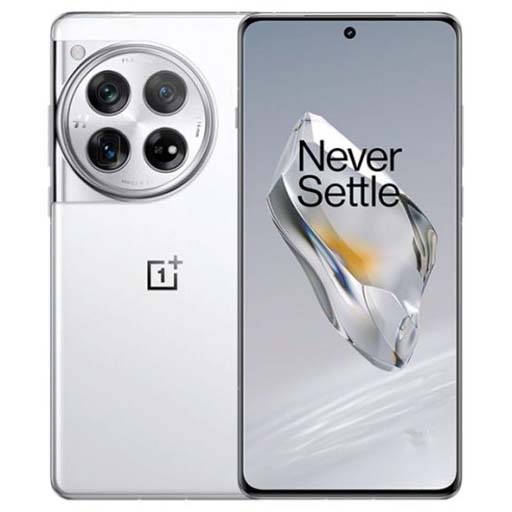
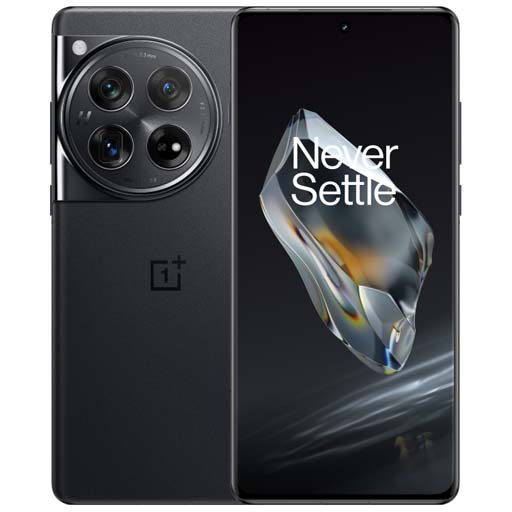

-
Released: 2023, December 11
-
Operating System: Android 14, OxygenOS 14, ColorOS 14
-
Display: 6.82" 1440x3168 pixels
-
Camera: 50MP 4320p
-
RAM: 12-24GB RAM Snapdragon 8 Gen 3
-
Battery: 5400mAh Li-Po
Specifications
Prices
| Unofficial Unofficial |
12GB 256GB ৳80,000 / 16GB 512GB ৳91,000 / 16GB 1TB ৳98,000 |
| Global Global | €950 |
Launch
| Announced Announced | 2023, December 05 |
| Status Status | Available. Released 2023, December 11 |
Network
| Technology Technology | GSM / CDMA / HSPA / CDMA2000 / LTE / 5G |
| 2G 2G |
GSM 850 / 900 / 1800 / 1900 - SIM 1 & SIM 2 (dual-SIM model only) CDMA 800 |
| 3G 3G |
HSDPA 850 / 900 / 1700(AWS) / 2100 - China CDMA2000 1x |
| 4G 4G |
1, 3, 4, 5, 7, 8, 18, 19, 20, 26, 28, 34, 38, 39, 40, 41, 66 - China |
| 5G 5G |
1, 3, 5, 7, 8, 20, 28, 38, 40, 41, 66, 77, 78 SA/NSA - China |
| Speed Speed | HSPA, LTE-A (CA), 5G |
| GPRS GPRS | |
| EDGE EDGE |
Body
| Dimensions Dimensions | 164.3 x 75.8 x 9.2 mm (6.47 x 2.98 x 0.36 in) |
| Weight Weight | 220 g (7.76 oz) |
| Build Build | Glass front (Gorilla Glass Victus 2), glass back (Gorilla Glass), aluminum frame |
| SIM SIM |
Single SIM (Nano-SIM) or Dual SIM (2x Nano-SIM, eSIM, dual stand-by) or Dual SIM (2x Nano-SIM, dual stand-by) |
| Water Resistant |
IP65, waterproof and dustproof |
Display
| Type Type | AMOLED capacitive touchscreen, 1B colors |
| Size Size | 6.82 inches, 113.0 cm2 (~91.3% screen-to-body ratio) |
| Resolution Resolution | 1440 x 3168 pixels (~510 ppi density) |
| Protection Protection | Corning Gorilla Glass Victus 2 |
| Refresh Rate Refresh Rate | 120Hz |
| Features Features | Always-on display, Dolby Vision, HDR10+, 1600 nits (HBM), 4500 nits (peak) |
Platform
| Operating System OS => Every computer system run on a base software called Operating System (OS). Operating System controls all basic operations of the computer (such as smartphone, PDAs, tablet computers and other handheld devices). The Operating System allows the user to install and run third party applications (apps), apps are used to add new functionality to the device. | Android 14, OxygenOS 14 (International), ColorOS 14 (China) |
| Chipset Chipset |
Qualcomm SM8650-AB Snapdragon 8 Gen 3 (4 nm) |
| CPU CPU |
Octa-core (1x3.3 GHz Cortex-X4 & 5x3.2 GHz Cortex-A720 & 2x2.3 GHz Cortex-A520) |
| GPU GPU |
Adreno 750 |
Memory
| Card slot Card slot | No |
| Internal Internal | 256/512 GB / 1TB UFS 4.0 |
| RAM RAM | 12/16/24 GB |
Main Camera
| Back Back |
50 MP, f/1.6, 23mm (wide), 1/1.43", 1.12µm, Dual Pixel PDAF, OIS 64 MP, f/2.6, 70mm (periscope telephoto), 1/2.0", 0.7µm, PDAF, OIS, 3x optical zoom 48 MP, f/2.2, 14mm, 114˚ (ultrawide), 1/2.0", 0.8µm, PDAF |
| Features Features | Hasselblad Color Calibration, Dual-LED flash, HDR, panorama |
| Video Video |
8K@24fps, 4K@30/60fps, 1080p@30/60/240fps, Auto HDR, gyro-EIS, Dolby Vision |
Selfie camera
| Front Front |
32 MP, f/2.4, 21mm (wide), 1/2.74", 0.8µm |
| Features Features | Auto-HDR, panorama |
| Video Video |
4K@30fps, 1080p@30fps, gyro-EIS |
Sound
| Alert Types | Vibration, MP3, WAV ringtones |
| Loudspeaker | Yes, with stereo speakers |
| 3.5 mm jack 3.5 mm jack | No, 24-bit/192kHz audio |
Connectivity
| WLAN WLAN | Wi-Fi 802.11 a/b/g/n/ac/6/7, dual-band, Wi-Fi Direct |
| Bluetooth Bluetooth is a wireless communications technology for exchanging data between mobile phones, headsets, computers and other network devices over short distances without wires, Bluetooth technology was primarily designed to support simple wireless networking of personal consumer devices. | 5.4, A2DP, LE, aptX HD |
| GPS GPS The Global Positioning System is a satellite-based radio navigation system, GPS permits users to determine their position, velocity and the time 24 hours a day, in all weather, anywhere in the world, In order to locate your position, your device or GPS receiver must have a clear view of the sky. | GPS (L1+L5), GLONASS (G1), BDS (B1I+B1c+B2a), GALILEO (E1+E5a), QZSS (L1+L5) |
| NFC NFC (Near field communication) is a set of standards for smartphones and similar devices to establish peer-to-peer radio communications with each other by touching them together or bringing them into proximity, usually no more than a few inches. | |
| FM Radio | No |
| USB | USB Type-C 3.2, OTG |
| Infrared port Infrared connectivity is an old wireless technology used to connect two electronic devices. It uses a beam of infrared light to transmit information and so requires direct line of sight and operates only at close range. |
Features
| Sensors Sensors are electronic components that detects and responds to some type of input from the physical environment. The specific input could be light, heat, motion, moisture, pressure and location, The output is generally a signal that is converted to use in computing systems, a location sensor, such as a GPS receiver is able to detect current location of your electronic device. |
Fingerprint (under display, optical), accelerometer, gyro, proximity, compass, color spectrum |
| Messaging Messaging | SMS(threaded view), MMS, Email, Push Email, IM |
| Browser Web Browser => a web browser is a software application used to locate, retrieve and display content on the World Wide Web, including Web pages, images, video and other files, The primary function of a web browser is to render HTML, the code used to design or markup webpages. | HTML5 |
| Java Support Java for Mobile Devices is a set of technologies that let developers deliver applications and services to all types of mobile handsets, ranging from price efficient feature-phones to the latest smartphones. Java is currently running on over 3 billion phones worldwide, and growing. It offers unrivaled potential for the distribution and monetization of mobile applications. |
Battery
| Battery Type Battery Type => Cell phones run on various kinds of batteries depending on the manufacturer, phone size or shape and features. There are basically four types of cell phone batteries => Lithium Polymer, Lithium Ion, Nickel Metal Hydride and Nickel Cadmium. | Non-removable Li-Po |
| Capacity Battery Capacity is a measure (typically in Amp-hr) of the charge stored by the battery, and is determined by the mass of active material contained in the battery. The battery capacity represents the maximum amount of energy that can be extracted from the battery under certain conditions. | 5400 mAh |
| Charging Wireless Charging (Inductive Charging) uses an electromagnetic field to transfer energy between two objects. This is usually done with a charging station. Energy is sent through an inductive coupling to an electrical device, which can then use that energy to charge batteries or run the device. |
100W wired, PD, 1-100% in 26 min (advertised) 50W wireless, 1-100% in 55 min (advertised) 10W reverse wireless |
| Fast Charging Fast Charging | Yes |
More
| Made by Made by | China |
| Colors |
Black, Green, Silver |

OnePlus 12 Review – Full Coverage for Bangladesh, 2025
Introduction & Price Overview
The OnePlus 12 stands as OnePlus’s 2024–2025 flagship, a true powerhouse that blends blistering performance, excellent cameras, refined software, and elegant design. In Bangladesh in 2025, the OnePlus 12 continues to be a highly desirable choice for those who want flagship features without paying Samsung or Apple flagship prices.
As of August 2025, the OnePlus 12 price in Bangladesh typically ranges between BDT 160,000 and BDT 175,000 for brand-new units sold through official channels or reputed importers. Grey-market and open-market stock may list it between BDT 150,000 and BDT 160,000, depending on color variant, bundle offers, and warranty condition. Used but well-maintained units often sell between BDT 120,000 and BDT 140,000, giving excellent value for a nearly two-year-old flagship.
This price range places the OnePlus 12 in the upper flagship tier—precise placement depending on whether you balance price versus Galaxy S and iPhone alternatives. Yet, it delivers standout value to users who prioritize speed, display, and clean software finesse.
Design & Build Quality
From the moment you hold it, the OnePlus 12 feels premium. OnePlus pushed its design language into new territory with this model: a gently curved glass front and back, elegantly sloping aluminum frame, and a tasteful camera island that blends symmetry with a hint of industrial style. Finished in colors like Black Shadow and White Marble, the phone looks and feels sleeker in person than some older models.
Dimensions: approximately 163 x 74.5 x 8.3 mm, with a weight near 205 grams. It balances large-screen immersion with manageable ergonomics. One-handed use is feasible for most with a bit of thumb stretch, and grip is secure even without a case. The curves stop just past the screen edges, reducing accidental touches—a thoughtful design touch.
Build-wise, the OnePlus 12 features Gorilla Glass Victus front and back, an aluminum mid-frame, and an IP68 rating—fully dust and water resistant—making it a sturdier choice for Bangladesh’s monsoon and summer heat/humidity. Buttons are crisp and well-placed, and the alert slider remains a fan favorite.
A subtle point: the overall silhouette is more refined than the sharper angled sides of some competitors, and the symmetrical curves near the camera lens give it a stretched elegance that works well in pockets and hand.
Display Quality & Multimedia
The OnePlus 12 features a 6.82-inch Fluid AMOLED display at 1440 × 3168 resolution (QHD+), and it delivers cinema-grade clarity that’ll still impress in 2025. Colors are vibrant but calibrated enough to please purists, contrast is infinite, and black levels are pristine.
ProMotion-style adaptive refresh runs from 1 Hz to 120 Hz, balancing ultra-smooth interpolation for animation with power efficiency for static content. Touch sampling reaches 240 Hz, meaning edge swipes and high-intensity game input feel silky responsive.
Peak brightness climbs above 2000 nits for exceptional outdoor legibility under harsh sun—Bangladesh does get bright, and this display handles it effortlessly. HDR10+ certification adds pop to streaming content, and color accuracy out-of-box sits around D65 with near-reference gamma in Natural mode.
Corning’s Victus layer is there to protect, but you’ll still want a good screen protector and case—the size demands respect. Screenshots and screen-on time easily surpass six to seven hours on balanced use, which is extraordinary.
When watching videos or gaming, the OnePlus 12 display is easily one of its most compelling features—if you care about quality and smoothness, this screen delivers.
Performance & Hardware
Under the hood, the OnePlus 12 packs the flagship Snapdragon 8 Gen 3 (4 nm), paired with up to 16 GB LPDDR5X RAM and 512 GB UFS 4.0 storage. It’s a straight slugfest of raw speed. Launch apps, switch tasks, compile code—nothing slows it down.
Every UI animation across OxygenOS 14 feels zero-lag smooth. Multitasking is fluid—even with heavy games open, you’ll have little to no reloads. Genshin Impact at ultra settings runs flawlessly; thermal throttling is minimal, even during heavy benchmarking or extended game sessions, thanks to a vapor chamber and graphite shielding.
Heat is managed impeccably; the metal frame remains warm, not scorching, and YouTube-watch throttles are rare—even after long video sessions under direct sunlight, performance stays rock solid.
For memory configuration: the base 12 GB RAM + 256 GB storage is already future-proof, but the 16 GB + 512 GB variant offers max breathing room—whether for editing 8K video or keeping thousands of raw images. No microSD slot, but with UFS 4.0 speeds, transferring off-device remains fast and painless.
In benchmarks, it clears over 2.2 million in AnTuTu V10, performs in the top percentile of CPU/GPU clusters, and 5G modem speeds are gigabit-class when networks allow—Bangladesh’s 5G patchwork benefits well from that bandwidth headroom.
Bottom line: the OnePlus 12 remains a performance beast in 2025, with enough headroom to last years ahead.
Cameras & Photography
The OnePlus 12 camera suite is co-engineered with Hasselblad and includes:
- 50 MP main sensor, 1/1.3”, OIS
- 48 MP ultrawide, 114° FOV
- 32 MP telephoto, 2.8x optical zoom
- 16 MP front camera
OnePlus improved its Nightscape and Hasselblad processing pipeline, and it pays off.
Main sensor performance:
Daylight shots are vibrant yet true-to-tone, with strong dynamic range and highlight control. The image pipeline preserves texture better than heavier flagship editors that over-sharpen. OIS keeps photos crisp—even at zoom and in moderate handheld low light.
Ultra-wide and tele—both strong:
ULTRA-wide preserves edge detail and avoids glare artifacts. Colors match the main sensor’s tone, avoiding obvious mismatching. Photography from group scenes or landscapes looks natural. the telephoto’s 2.8x shots have excellent clarity; in good light you’d be hard-pressed to tell from a 3x dedicated lens. Night zoom holds up too—grain isn’t excessive.
Low-light mastery:
Night mode triggers seamlessly or manually. Shots of environments under low street lighting or in dim rooms retain clarity with moderate noise and good color—far better than most mid-rangers. In really dark environments, the OnePlus 12 lets you expose for a second or two with OIS support, producing usable results where others wash into mush.
Portraits:
Facial tones and skin tones stay faithful. Background separation is well-balanced—even in challenging backlit scenes, edge detection avoids glaring clipping. The depth sensor helps nuance bokeh, and portrait videos at 4K remain stable.
Video:
You can shoot up to 8K at 30fps or 4K at 60fps on all captures. OIS + EIS stabilization keeps footage smooth whether you’re walking, biking, or holding handheld. HDR10+ in video preserves dynamic range brilliantly. Low-light video is stronger than most—objects remain discernible; noise reduction avoids soft mush.
Front camera:
At 16 MP, the selfie camera remains top-quality in 2025. It’s sharp, has accurate skin tones, and includes EIS for stabilized vlogging. Portrait selfie mode is smooth with decent edge detection even with messy hair and busy backgrounds.
All in all, the OnePlus 12 camera system still competes—and in many scenes outperforms—2025 rivals that cost far more.
Battery Life & Charging
The OnePlus 12 houses a 5500 mAh battery (big for a flagship) and supports 100 W SUPERVOOC wired charging plus 50 W AirVOOC wireless charging. Truly flagship-level power management and charging.
On typical use—including gaming, streaming, social networks, calls, etc.—you can expect 6 to 7 hours of screen-on time easily, stretching to two full days for light users. Mixed heavy use still ends in about 40% battery by late evening.
Charging from near-empty to full takes approximately 28 minutes wired. Air charging from almost empty to full runs around 58 minutes. Both speeds remain safe—and OnePlus includes battery-care software that learns your charging habits and limits charge to 80%, then completes it just before you wake. Long-term battery degradation is reduced.
This endurance remains one of the OnePlus 12‘s strongest continuing strengths in 2025, especially where power outlets can be sparse.
Software & User Experience
OxygenOS 15, atop Android 14, powers the OnePlus 12 today. It combines minimalist design with useful enhancements: flex controls, file isolation zones, refined dark modes, smart sidebar, and heavily customizable shelf. Widgets are smooth, theme engine is slick, and animation feels fluid.
Software updates continue: the OnePlus 12 is part of OnePlus’s flagship update cycle, receiving incremental updates and security patches monthly, with at least 3 OS upgrades expected through 2026. This keeps it fresh longer than most devices in Bangladesh—even when purchased second-hand.
Gesture navigation is responsive and intuitive. Split-screen and floating windows work seamlessly on the large display. OnePlus also restored some welcome features like native screen recording with audio, enhanced manual camera mode, and granular always-on display customizations.
For users coming from stock Android or Samsung OneUI, the transition is smooth, with almost zero learning curve and a clean UI that discourages bloat. In 2025, OxygenOS on the OnePlus 12 remains one of the best software experiences achievable in any price bracket.
Connectivity & Extras
- Dual-band Wi-Fi 6E (AX) ensures futureproofed home speeds.
- 5G Sub-6 and mmWave (depending on batch) with seamless fallback to stable 4G.
- Bluetooth 5.4 supports low-latency gaming and audio transmission.
- NFC works fluently with mobile wallet apps—Tap N Go, JazzCash, and others.
- IP68 means worry-free use in sweat, rain, or inactive dust.
- Stereo speakers tuned by Dirac deliver punchy sound with clear mids and solid bass; audio is rich for a slim body.
All sensors and extras—barometer, IR blaster (in some editions), dual-nanoSIM, dual-frequency GPS—work well. For Bangladesh’s needs, whether you’re ride-sharing, scanning QR payments, or streaming podcasts, the OnePlus 12 keeps up without drama.
Pros & Cons (Fair, Balanced)
Pros of the OnePlus 12
- One of the best displays in its era—QHD+, 120 Hz, incredibly bright.
- Snapdragon 8 Gen 3 is still the fastest chip of its generation and stays cool.
- Hasselblad-tuned triple camera outperforms newer flagships in many lighting scenarios.
- Long battery life with 100 W wired and 50 W wireless charging.
- Clean, fast OxygenOS with multi-year updates.
- Premium build—Gorilla Glass Victus, aluminum frame, IP68 dust/water seal.
- Fully featured: Wi-Fi 6E, NFC, 5G, stereo sound.
Cons of the OnePlus 12
- Pricing in Bangladesh remains steep—official units push into BDT 170k; used buying is smarter but still significant.
- No ultra-eco battery mode for multi-day standby (though ambient display helps).
- Case options for newer phone models still limited at some local outlets.
- Slightly heavy for everyday one-handed use—205g isn’t light if you’re used to sub-180g mid-rangers.
- The Colorway (White Marble) can show fingerprints more—matte film helps.
Value Judgment for Bangladesh in 2025
If you prioritize top-tier display, performance, camera, and charging—and plan to hold your device for years—the OnePlus 12 delivers a near-flagship experience at (often) 20–30% less cost than comparable Samsung or Apple flagships in Bangladesh.
At BDT 150k to 160k (opened price), it competes well against Galaxy S24 Ultra or iPhone 15 Pro Max while offering superior battery life and software flexibility.
Buying used/refurbished at BDT 120–140k represents tremendous value—still, the OnePlus 12‘s software, durability, and hardware can easily extend to 2026 or beyond, making the total cost of ownership very competitive.
For professionals, creators, and tech enthusiasts wanting the best experience that’s still attainable in Dhaka, Chattogram, or Rajshahi’s markets, the OnePlus 12 is a solid investment. Especially when paired with a fast charger and good case, it remains a top contender in 2025.
Tips to Maximize Experience
- Use Natural or Gentle color profile to reduce over-saturation.
- Enable Pro mode for better low-light and long exposure shots.
- Keep an eye on charging habits—avoid charging to 100% overnight regularly without optimized charging mode.
- For gaming, use Performance Mode plus Wi-Fi 6E for reduced latency.
- Apply a matte or clear case to improve grip without sacrificing aesthetics.
- Keep OxygenOS updated for monthly patches and feature enhancements.

Conclusion
The OnePlus 12 remains a serious flagship powerhouse in 2025 Bangladesh. Between stellar hardware, refined software, long-term support, and thoughtful features, it continues to deliver a near-perfect user experience—not just on paper, but in daily life too.
If your budget permits, the OnePlus 12 is still a smart buy for anyone wanting a phone that stays fast, up-to-date, and graceful for years. In a mid-range market crowded with cheap spec-lists, it stands out by delivering balance, polish, and longevity—or, in simpler words: flagship experience that endures.
Reviews
Disclaimer Note
We always try our best to keep our website content and information updated and correct, the material and information contained on our website is for general information purposes only, You should not rely upon the material and information as a basis for making any business, legal or any other decisions.

